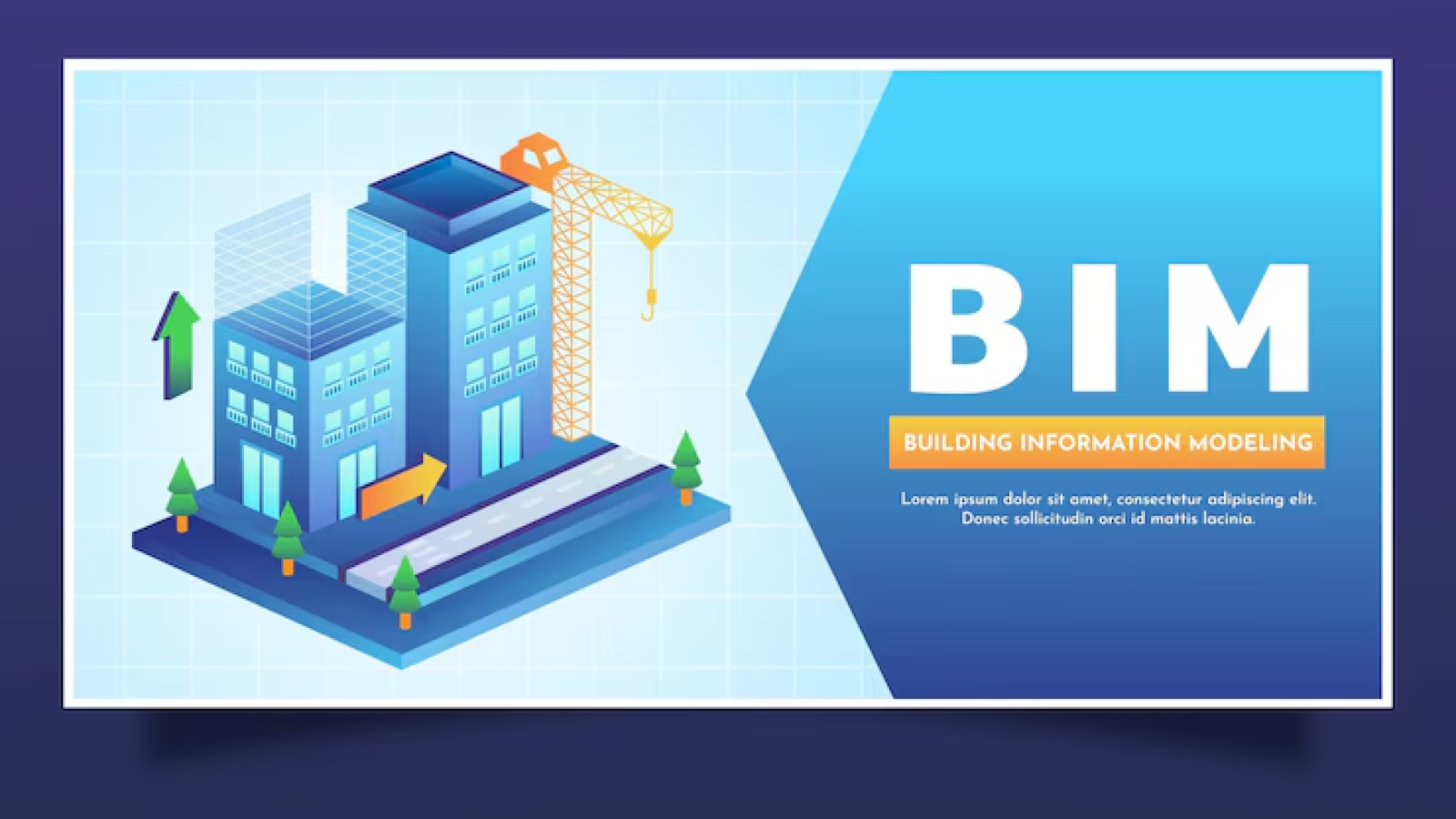
The construction industry has undergone a remarkable transformation over the past few decades, largely driven by technological advancements. One of the most groundbreaking innovations in this sector is Building Information Modeling (BIM). However, BIM is far more than just a tool or software; it is a comprehensive process that significantly enhances the planning, design, construction, and management of buildings and infrastructure. In this expanded article, we’ll delve deeper into what BIM is and how it is revolutionizing civil engineering.
Understanding BIM Technology
BIM, an acronym for Building Information Modeling, represents a paradigm shift in how building projects are conceptualized and executed. At its heart, BIM is a digital representation of the physical and functional characteristics of a facility. This technology provides a holistic view of a building project by incorporating a wide array of data inputs, including geometry, spatial relationships, geographic information, and the quantities and properties of building components.
The Foundation of BIM
The essence of BIM lies in its ability to integrate complex data into a single coherent model. This integration facilitates a shared understanding among all stakeholders, from architects and engineers to contractors and clients. It serves as a digital repository that evolves throughout the project lifecycle, offering insights at every stage.
BIM’s comprehensive approach allows it to provide more than just a visual representation. It encapsulates the operational characteristics of a building, enabling stakeholders to predict performance, manage risks, and optimize outcomes.
How BIM Works
BIM technology fosters a collaborative environment where architects, engineers, and construction professionals can work together seamlessly. It enables the integration of various design aspects into a single cohesive model, making it easier to visualize and manage the entire project from inception to completion.
Key features of BIM include:
- 3D Modeling: BIM offers 3D models that provide stakeholders with a more effective visualization of the project compared to traditional 2D drawings. This capability enhances understanding and communication among project participants.
- Data Management: BIM incorporates extensive data about every element of a building, ranging from walls and windows to HVAC systems and plumbing. This rich data environment supports informed decision-making throughout the project lifecycle.
- Collaboration: By allowing different professionals to work on the same model, BIM facilitates real-time updates and reduces the likelihood of errors. This collaborative approach enhances coordination and aligns project goals.
The Role of Digital Twins
In recent years, the concept of digital twins has become intertwined with BIM. Digital twins are virtual replicas of physical structures that are continuously updated with real-time data. These twins enable more dynamic modeling and simulation, offering a new dimension of insight into building performance and lifecycle management.
The integration of digital twins with BIM extends the potential of these models beyond construction, supporting ongoing facility management and operational optimization.
BIM in Civil Engineering
BIM’s impact on civil engineering is profound, reshaping how projects are designed and executed. It streamlines the entire construction process, from initial conceptualization to final completion. Here’s how BIM is used in civil engineering:
Design and Visualization
Civil engineers leverage BIM to create detailed designs and visualize complex structures. This technology enables the simulation of various scenarios, such as assessing how a building will withstand environmental forces or envisioning its aesthetic appearance once completed.
By utilizing BIM, engineers can identify potential design conflicts early in the process, thereby reducing the need for costly changes during the construction phase. This proactive approach minimizes rework and enhances project efficiency.
Moreover, BIM allows for the integration of structural analysis tools, enabling engineers to perform stress tests and evaluate load-bearing capacities within the digital model. This capability ensures that designs meet safety standards and regulatory requirements.
Project Management
BIM revolutionizes project management by providing a centralized platform for all project data. Civil engineers can access and share information effortlessly, improving communication and coordination among team members.
With BIM, project timelines and costs become more predictable. Engineers can conduct accurate quantity take-offs and generate detailed cost estimates, helping to ensure projects remain on budget. This increased accuracy in forecasting enhances stakeholder confidence and project viability.
Additionally, BIM supports scheduling and resource allocation, enabling project managers to optimize workflows and allocate resources effectively. This comprehensive project oversight minimizes delays and maximizes productivity.
Construction Efficiency

BIM enhances construction efficiency by providing a detailed blueprint that guides the construction process. It reduces the risk of errors and rework, as the model can be used to identify potential issues before they arise.
Furthermore, BIM supports prefabrication, allowing parts of a project to be manufactured off-site and assembled on-site, saving time and resources. This approach not only expedites construction but also improves quality control and reduces environmental impact.
The use of BIM also facilitates clash detection, a process that identifies conflicts between different building systems before construction begins. By resolving these clashes in the digital model, construction teams can avoid costly on-site modifications.
Facility Management
The benefits of BIM extend beyond the construction phase, offering valuable advantages for facility management. Once a project is complete, the BIM model serves as a comprehensive tool for ongoing maintenance, renovations, and future expansions.
Facility managers can access detailed information about all building components, including maintenance schedules, warranties, and operational guidelines. This information supports proactive maintenance strategies, reducing downtime and extending the lifespan of building systems.
Moreover, BIM’s ability to simulate building performance enables facility managers to optimize energy consumption and implement sustainability initiatives. These insights contribute to more environmentally friendly and cost-effective building operations.
Benefits of BIM in Civil Engineering

The adoption of BIM in civil engineering brings numerous advantages that transform project outcomes and industry practices:
Improved Collaboration
BIM fosters a collaborative working environment, reducing miscommunications and improving project outcomes. By providing a shared platform for all stakeholders, BIM enhances teamwork and ensures that everyone is aligned with project objectives.
The collaborative nature of BIM also encourages cross-disciplinary innovation, allowing professionals from different fields to contribute their expertise and insights. This integration of diverse perspectives leads to more creative and effective solutions.
Enhanced Accuracy
With detailed models and data, BIM reduces the likelihood of design errors and omissions. The precision of BIM models ensures that every aspect of the project is thoroughly analyzed and documented, minimizing the risk of costly mistakes.
BIM’s accuracy extends to construction documentation, where detailed plans and specifications guide contractors and subcontractors. This clarity reduces ambiguity and facilitates smoother project execution.
Time and Cost Savings
BIM streamlines the construction process, helping projects stay on schedule and within budget. The ability to simulate construction sequences and optimize workflows enhances project efficiency and reduces delays.
By identifying potential issues early in the design phase, BIM minimizes the need for costly rework during construction. This proactive approach translates into significant cost savings and improved project profitability.
Sustainability
BIM allows for better analysis of energy efficiency and environmental impact, supporting the development of more sustainable buildings. By simulating building performance and assessing energy consumption, BIM helps architects and engineers design structures that minimize environmental footprint.
Furthermore, BIM’s integration with sustainability assessment tools enables project teams to evaluate the environmental impact of construction materials and methods. This insight promotes the use of eco-friendly practices and materials, contributing to a more sustainable construction industry.
Challenges and Future of BIM
Despite its many benefits, BIM adoption is not without challenges. The initial setup cost and the need for training can be barriers for some organizations. Additionally, standardization across the industry is still evolving, which can lead to compatibility issues between different BIM software.
Initial Costs and Training
Implementing BIM requires a significant investment in technology and training. Organizations must acquire the necessary software and hardware, as well as train their staff to effectively utilize BIM tools. This initial cost can be a deterrent for smaller firms with limited budgets.
However, the long-term benefits of BIM, such as improved efficiency and reduced rework, often outweigh the initial investment. As more organizations adopt BIM, the cost of technology and training is expected to decrease, making it more accessible to a wider range of companies.
Standardization and Compatibility
The lack of standardization in BIM practices can lead to compatibility issues between different software platforms. This variability can complicate collaboration between project teams using different BIM tools, potentially hindering project progress.
Efforts are underway to establish industry-wide standards and protocols to address these challenges. As standardization improves, the interoperability of BIM software will enhance collaboration and streamline project workflows.
Integration with Emerging Technologies
The future of BIM looks promising, with exciting opportunities for integration with emerging technologies. As technology advances and more professionals embrace BIM, its capabilities and applications are expected to grow.
The integration of artificial intelligence (AI) and machine learning with BIM will enable more advanced data analysis and predictive modeling. These technologies can enhance decision-making and optimize project outcomes by identifying trends and patterns in large datasets.
Additionally, the incorporation of virtual reality (VR) and augmented reality (AR) into BIM will revolutionize how stakeholders interact with models. These immersive technologies offer new ways to visualize and experience building designs, improving communication and stakeholder engagement.
Conclusion
Building Information Modeling is transforming the landscape of civil engineering. By providing a comprehensive and collaborative approach to building design and construction, BIM enhances efficiency, accuracy, and sustainability. As the industry continues to evolve, BIM will undoubtedly play a crucial role in shaping the future of construction.
Incorporating BIM into your projects not only improves outcomes but also positions you at the forefront of innovation in civil engineering. Embrace BIM technology today and unlock the potential for better building and infrastructure development.
BIM’s transformative impact on the construction industry is undeniable, offering a pathway to more efficient, sustainable, and innovative project execution. As professionals continue to harness the power of BIM, the potential for improved design, construction, and facility management will only grow, leading to a more advanced and resilient built environment.





